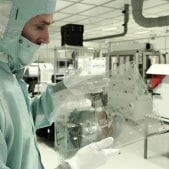San Diego, CA, November 12: The Critical Materials Council (CMC) of semiconductor fabricators and TECHCET announce the CMC Conference Call For Papers (CFP) for the event happening April 23-24 in Hillsboro, Oregon. The 2020 CMC Conference (https://cmcfabs.org/cmc-conference-2020/) will explore actionable technical and supply-chain trends related to critical materials for global semiconductor fabs. Keynote address for this 5th CMC Conference will be:
"Critical Materials Pushing the Limits for Semiconductor Manufacturing"
Bruce Tufts, Vice President of Technology and Director of Fab Materials Org., Intel Corp.
Bruce Tufts, Vice President of Technology and Director of Fab Materials Org., Intel Corp.
The conference committee is soliciting presentations on best practices of sourcing direct and indirect manufacturing materials for pilot lines and for high-volume manufacturing (HVM). Three sessions will cover the following themes:
I. Global Value-chain Issues of Economics and Regulations,
II. Immediate Challenges of Materials & Manufacturing, and
III. Emerging Materials in R&D and Pilot Fabrication.
CMC member companies will be attending the public CMC Conference, which follows the annual members-only CMC meeting to be sponsored by Intel and held April 21-22. Conference attendees will include industry experts handling supply-chains, business-development, R&D, and product management, as well as academics and analysts. Business drives our world, but technology enables the profitable business of manufacturing new devices in IC fabs, and new devices need new materials.
To submit a paper for consideration, please send a 1-page abstract focusing on critical materials supply dynamics by January 15, 2020 to cmcinfo@techcet.com
----------
For more information on CMCFabs or CMC Associate Memberships, please contact Diane Scott at dscott@techcet.com. For information on sponsoring the CMC Conference please contact Yvonne Brown at ybrown@techcet.com, +1-480-382-8336 x1.
CMC Fab members include:



%20(1).png)










